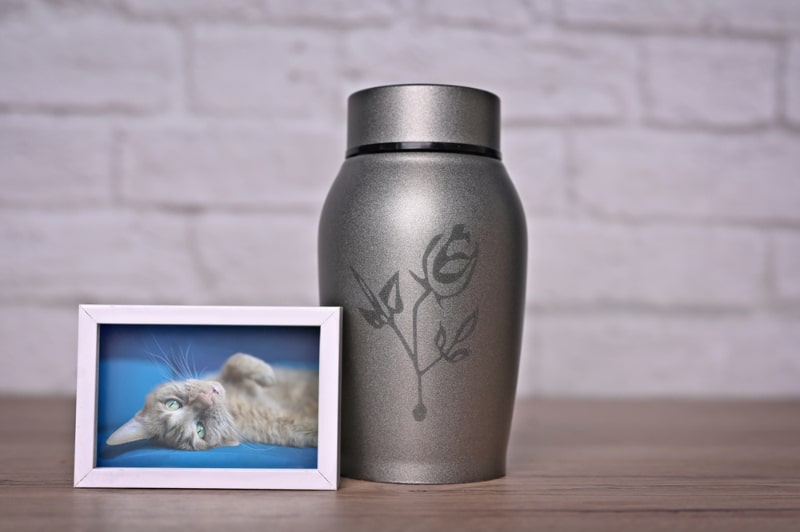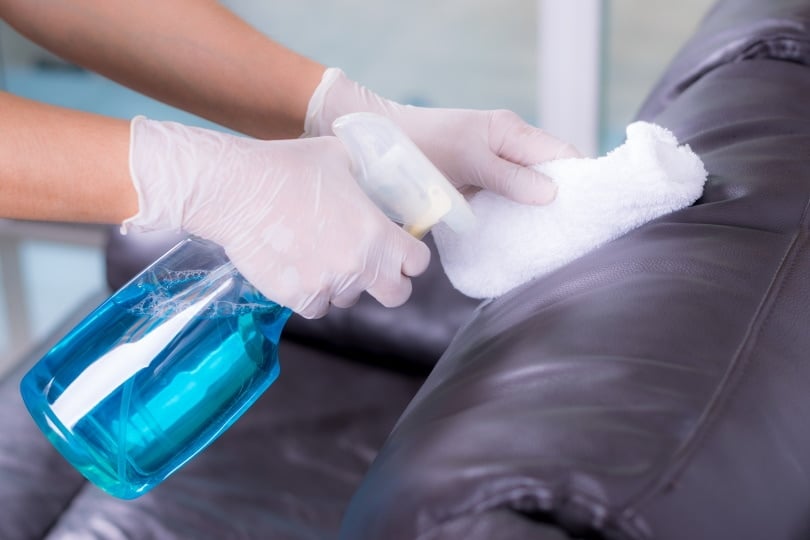Everyone who has owned a cat has probably experienced losing a cat. While the grief that comes with losing a cat isn’t always well understood, it can be a very trying time for those who love them. Plus, figuring out what to do when your pet dies from a practical standpoint is very challenging in some cases.
Here are some emotional and practical tips to help get you through this trying time:
The 8 Emotional & Practical Support Tips on What To Do When Losing a Cat
1. Allow Yourself to Grieve
Grieving can be hard, and it may seem easier to just skip the whole process. However, you should allow whatever emotions come with the death of your cat to come. Sadness and even anger are all a normal part of grieving that cannot be skipped.
Take time to process your feelings and get used to your beloved cat no longer being around.
Seeking out people who understand your feelings can be helpful, especially if your family is more on the “it’s just a pet” side of the spectrum. Your feelings need to be heard, and it’s important to seek out people who will listen. Know that you are not alone in feeling that your beloved cat is a dear family member that will be dearly missed and that your emotions are acceptable, valid, and completely normal in this process.

2. Talk to Someone
Sharing your grief with friends or family members is important. If you don’t have anyone close for you to talk to, you may want to consider joining a pet support group, even if it is online. These remote groups enable you to connect with others who may know what you’re going through.
Don’t be afraid to talk about your cat and share memories. Doing so can help bring you past a place of grief.
3. Don’t Rush to Replace Your Cat
Far too many cat owners rush to adopt a new cat. Often, this comes from a place of grief. Many think that adopting a new cat may help them overcome the loss of their past cat. However, every cat is different, and you’ll likely be disappointed if you think adopting a new cat will fill the hole left by your previous one.
Let yourself grieve before you adopt another cat. Of course, this can vary in length. Some people get through the grieving process quickly, while others may take months.
It’s important that any new cat you adopt doesn’t have to compete with the memory of your old cat. You should also feel open to how your new cat acts without feeling sad that they aren’t more like your old one.
It may feel strange to be without a cat for a little bit, but it’s important to let your grief be free.

4. Contact Your Veterinarian
Whether your cat was under the direct care of your vet or not, you should let them know that your cat is deceased. From a practical standpoint, this allows them to mark your cat as deceased in their system so that you won’t get those “Fluffy needs a checkup” messages.
If your cat dies after receiving care from your vet, there may be some extra steps that need to be taken. In some cases, the odds of your cat surviving may have been low and the cause known. At other times, the vet may need to further investigate the cause of death and request to perform a necropsy. It may help the vet make a definite diagnosis and enable them to continue their professional education, since each case can be so unique. Know that vets can also offer emotional support. After all, they are pet people too!.
5. Decide on Death Care
After your cat dies, there is a lot you can do with the body. Depending on the local laws of your area and the specific characteristics of your property, burial could take place at home. Another option is a pet cemetery, though these are still pretty rare in most communities. Cremation is becoming more and more common. You can pay to have your pet cremated individually, and there are tons of communal options too. Newer and greener alternatives, such as aquamation, are also becoming available for pets.
It all depends on what your priorities are and what your budget allows. When in doubt, your vet probably knows what’s available in your area.

6. Update Your Records
You’ll need to inform every company that had a record of your cat that they are now deceased. Most commonly, these may include the microchip company and your pet’s insurance company. These companies need to know that your cat is no longer around. After all, you won’t need to pay your monthly insurance fee.
You may need to let other service providers know too. For instance, if your cat had a regular groomer or attended a cat daycare, it’s important to let them know your kitty won’t be coming in anymore.
Some of these updates are time-sensitive, such as your pet’s insurance company or those that involve others’ agendas. Others can take place slower as you feel up to it.
7. Clean and Disinfect
We recommend cleaning and disinfecting the area your cat spent time in before their passing, especially if they were ill. You don’t want to risk spreading pathogens around. If you have other cats, be sure to keep them out of the area until you have completely disinfected it.
Even if your cat isn’t sick with something contagious, proper cleaning is recommended as a good and hygienic practice. Some pet parents use this opportunity as part of the acceptance ritual to “let go” in peace.

8. Create a Memorial
Finally, you may want to create a memorial for your feline. Making the memorial is a way to process your grief. Plus, it also gives you something to look back on and enjoy, even if the process does make you a bit sad now.
There are many ways you can go about this. For one, you can just make a simple photo album full of pictures you’ve taken over the years with your cat. You can make a traditional photo album, print out the pictures, and slide them inside. Alternatively, you can also use an app to upload your photos and then have the company send you a ready-made book.
There are tons of photo album services out there today, so this memorial shouldn’t be all that challenging to make (practically speaking, at least).
You can also select a personalized urn for your cat’s ashes if you decide to get them cremated. This is a tangible way to remember them, though it does tend to be a bit more expensive than the photo album option. There are many options available too; certain services even allow you to incorporate some of your beloved pet’s ashes into custom-made jewelry.
Whatever way you decide to make a memorial, the important part is using it to process your emotions. Don’t aim to get it done as quickly as possible. Instead, you should go slowly, preferably getting the help of a friend as you need to.
Final Thoughts
Losing a feline is never easy, especially if you are very close to them. It’s important to be gentle with yourself, as grieving is a very complicated process. There is no right or wrong way to go about it, and it’s important to be patient with yourself. Grief may take longer than you thought.
When possible, remember the good memories you had with your cat—while also not ignoring the hard ones you had at the very end. Grief counseling may be necessary if you’re very distraught or find it hard to manage your feelings at all.
Don’t get angry at how others grieve either. Remember, it is an individual process, and you can’t expect everyone to grieve like you do.
Featured Image Credit: Antonio Guillem, Shutterstock











